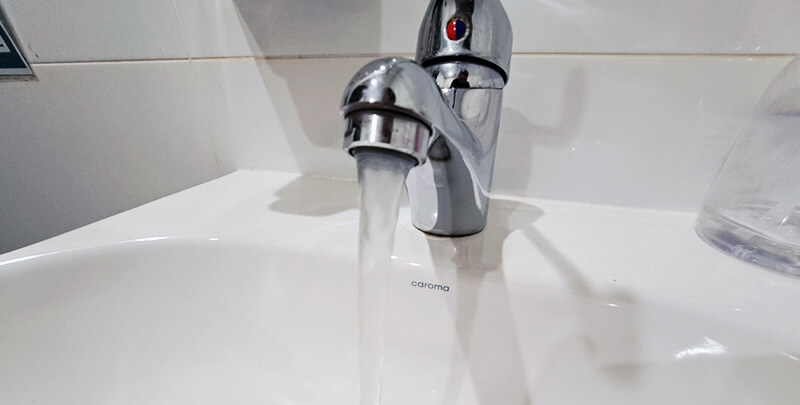
Understanding Common Water Pressure Issues: Causes and Solutions
Having adequate water pressure is essential for a smooth and efficient water flow in our homes. However, we often encounter issues with water pressure that can disrupt our daily activities.
In this blog post, we will delve into the common causes of experiencing low and high water-healthy pressure in your home and provide practical solutions to address these water meters and problems effectively.
Identifying Low Water Pressure Issues
Low water or low pressure faucets, can be frustrating, whether a weak stream of drinking water from your showerhead or the pooling water from a sluggish faucet.
Understanding the possible causes of low water or those experiencing low water pressure or-pressure faucets is the first step toward resolving the issue.
Possible Causes of Low Water Pressure
There are many causes of low water pressure, including:
- Clogged pipes or taps: One common cause of low water pressure is the accumulation of mineral deposits, sediment, or debris in the pipes or taps. Over time, these obstructions restrict water flow through burst pipes, reducing pressure.
- Faulty pressure regulator: A faulty pressure regulator, a plumbing fixture that controls the water flow by testing water pressure entering your home, can also cause low water pressure issues. If the failing pressure regulator is not functioning correctly, it may restrict the water flow, reducing pressure in cold water taps.
- Council water supply problems: Low water pressure can sometimes result from local council water supply issues. This could be due to maintenance work, burst pipe, leaks leaking pipes, no water regulations or high demand for water meters in the area.
Solutions to Low Water Pressure
There are as number of simple solutions if you’re experiencing low water pressure, including:
Check for Obstructions
Start by checking for any obstructions in your pipes or faucets. Please turn off the main water supply, remove the aerators from your faucets, and inspect them for build up. Clean or replace them if necessary. Additionally, consider flushing your faucet fixture and pipes by opening all faucets and letting the water run for a few minutes to clear any sediment or debris.
Clean or Replace Faucets and Showerheads
If you find mineral deposits or sediment build up on faucets or showerheads, soak them in vinegar and water to dissolve the deposits. Scrub gently with a brush and rinse thoroughly. If cleaning doesn’t improve the water pressure, consider replacing the faucets or showerheads.
Adjust or Replace Pressure Regulator
Locate the pressure regulator near your home’s main water supply entry point. Consult the manufacturer’s instructions or contact a professional, licensed plumber to adjust the regulator to a higher pressure setting, if possible. If the regulator is faulty, it may need to be replaced. In such cases, it’s recommended to seek the assistance of a licensed plumber.
Contact the Water Supplier
If you’ve ruled out any issues with cold or hot water systems or taps within your home, you should contact your local well water company or supplier. They can provide information on any ongoing maintenance or supply problems that may be affecting the flow testing the water pressure in particular taps in your area.
Addressing High Water Pressure Issues
High water pressure can lead to various plumbing problems, such as leaks, burst copper pipes, and prematurely worn-out plumbing fixtures and water appliances. It’s crucial to identify the causes of high water pressure and take appropriate measures to mitigate them.
Possible Causes of High Water Pressure Issues
What could be causing high water pressure? Let’s take a closer look:
- Faulty pressure reducing valve: A malfunctioning low-pressure or low-pressure flow-reducing valve, a stop valve, or a pressure regulator can cause excessive water pressure. The low flow valve is designed to limit the water pressure coming into your home, but if it fails, the pressure in steel pipes can rise to problematic levels.
- Thermal expansion: Thermal expansion occurs when water heats up and expands within the plumbing system. Without proper measures to the water pressure gauge to accommodate the expansion of the hot water system or meter valve internal to the plumbing system, pressure booster equipment, such as an expansion tank, can lead to high water pressure.
- Council water supply problems: Like low water pressure issues, high water pressure can sometimes be attributed to problems with the local council or water supply system in a natural location, such as water pumping or distribution issues.

Solutions to High Water Pressure Issues
There are a number of easy solutions to high water pressure. Let’s look at the solutions in detail:
Inspect and Adjust Pressure Reducing Valve
Locate the pressure-reducing valve, typically near normal water pressure, water meter valve, main water or main city supply pipe, entry point, or outdoor tap, and check for any signs of damage or malfunctions.
Adjust the valve to lower the pressure if you’re comfortable doing so. Refer to the manufacturer’s instructions or seek professional help if needed.
Install an Expansion Tank
If thermal expansion is the culprit behind high water pressure in private property’s plumbing well systems, installing an expansion tank can help alleviate the problem. An expansion tank provides a space for the expanded water to go, preventing the pressure from increasing within the property’s private plumbing well and system.
Contact the Water Supplier
If you’ve taken the necessary steps within your home and still experience high water pressure, contacting your water supplier is advisable. They can investigate and address any potential issues with internal, plumbing systems, water pipes or the municipal water supply that may be causing the water flow problem.
Get the Pressure Just Right
Maintaining optimal water pressure in your home is vital for a comfortable and functional living environment. By understanding the causes of common water pressure issues and following the appropriate solutions outlined in this article, you can ensure installed devices can effectively address any low-pressure water meter, low-pressure occurrences, or high water pressure problems.
Remember, it’s always best to seek professional assistance if you’re unsure or uncomfortable with any plumbing tasks or internal plumbing issues.
Please note: This information is provided for advice purposes only. Regulations differ from state to state, so please consult your local authorities or an industry professional before proceeding with any work. See our Terms & Conditions here.
FAQs About Low Water Pressure
Have you got any questions about low water pressure in your home? We answer them right here.
A pressure gauge built exclusively for measuring water pressure at home can be used for pressure tests. To achieve an accurate reading, connect the meter to an outside faucet or a tap filter at a specific pressure bucket test or point and open the tap nearest the bucket test faucet.
You can try DIY solutions, such as cleaning faucets and showerheads, flushing pipes, and adjusting pressure regulators. However, if the problem persists or you’re unsure, it’s best to consult a professional plumber.
Hiring a professional plumber is recommended if you’re uncomfortable with plumbing tasks or complex minimum pressure issues. They have the expertise to accurately diagnose and resolve water pressure problems, ensuring a safe and effective solution.